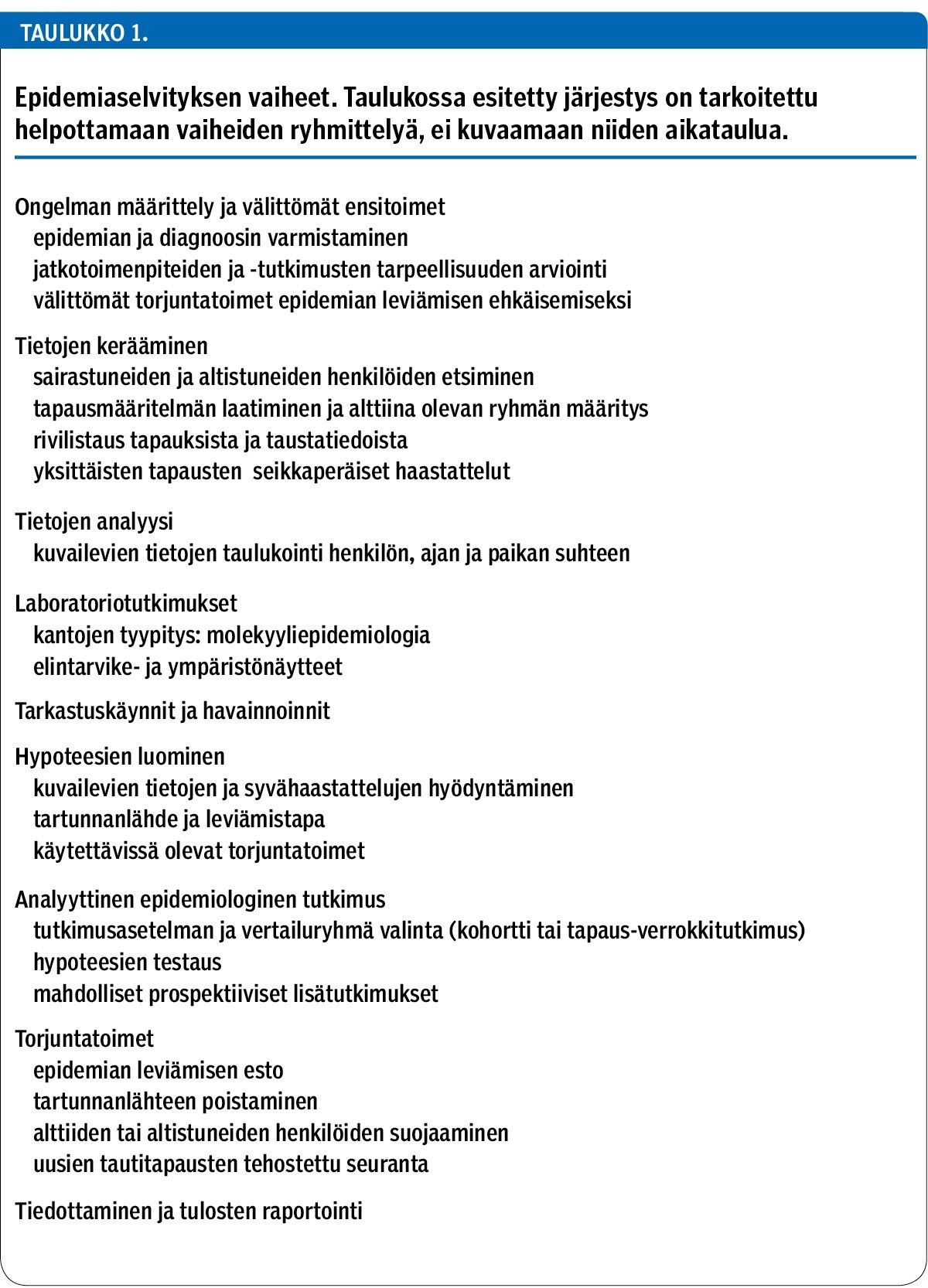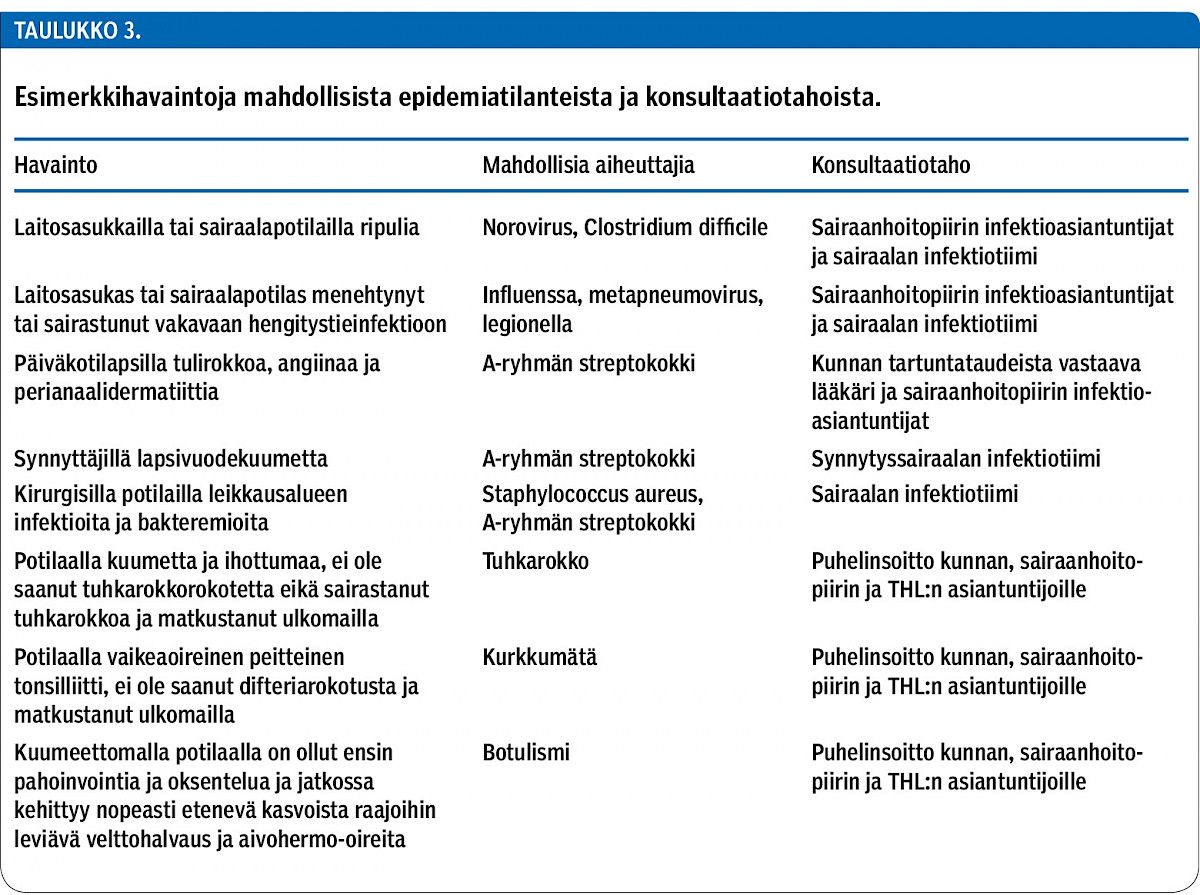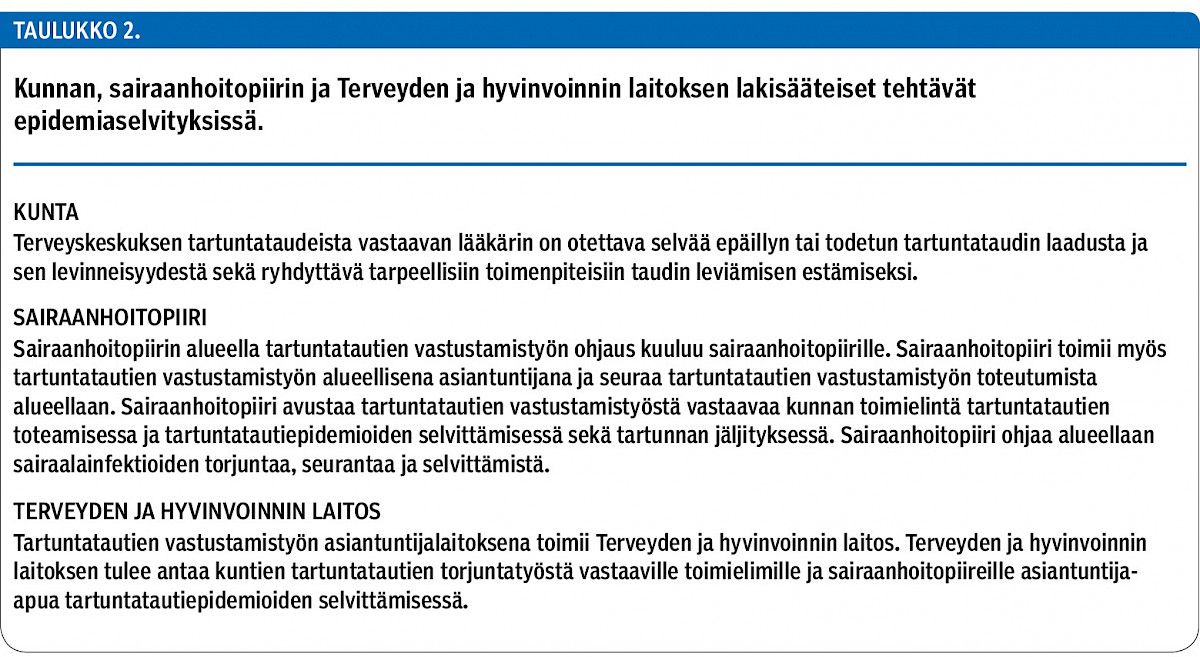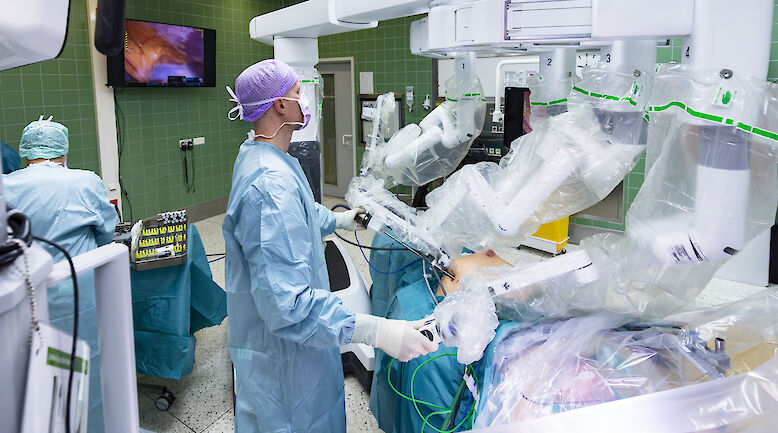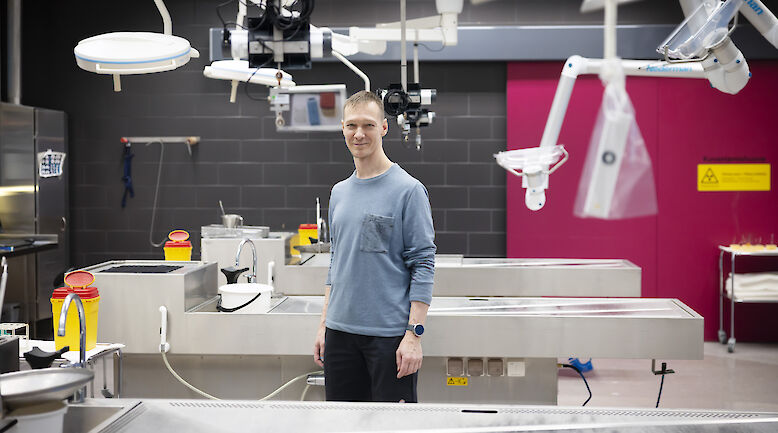What should physicians know about epidemics?

In recent decades, general outbreaks of infectious diseases have changed both in their epidemiological characteristics and in the spectrum of aetiological agents causing outbreaks. There are fewer point source outbreaks affecting a defined group of people, but more widespread outbreaks in which cases are dispersed in the community, the whole country or internationally. Therefore, investigation and control of outbreaks require rapid exchange of information and close collaboration and coordination of activities among health care and environmental health personnel and agencies at local and national levels, and also internationally. The goal of an outbreak investigation is to prevent new cases and implement appropriate, evidence-based control measures to stop the epidemic. To enable rational decision-making, epidemic investigations combine epidemiological and microbiological studies, infection control, and communication to the public. Interagency coordination and communication during outbreak response are frequently identified as areas requiring improvement.
